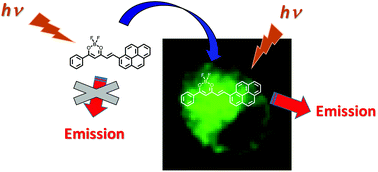Borondifluoride complexes of hemicurcuminoids as bio-inspired push–pull dyes for bioimaging†
Abstract
Hemicurcuminoids are based on half of the π-conjugated backbone of curcuminoids. The synthesis of a series of such systems and their borondifluoride complexes is described. The electrochemical and photophysical properties of difluorodioxaborine species were investigated as a function of the nature of electron donor and acceptor groups appended at either terminal positions of the molecular backbone. The emissive character of these dipolar dyes was attributed to an intraligand charge transfer process, leading to fluorescence emission that is strongly dependent on solvent polarity. Quasi-quantitative quenching of fluorescence in high polarity solvents was attributed to photoinduced electron transfer. These dyes were shown to behave as versatile fluorophores. Indeed, they display efficient two-photon excited fluorescence emission leading to high two-photon brightness values. Furthermore, they form nanoparticles in water whose fluorescence emission quantum yield is less than that of the dye in solution, owing to aggregation-induced fluorescence quenching. When cos7 living cells were exposed to these weakly-emitting nanoparticles, one- and two-photon excited fluorescence spectra showed a strong emission within the cytoplasm that originated from the individual molecules. Dye uptake thus involved a disaggregation mechanism at the cell membrane which restored fluorescence emission. This off–on fluorescence switching allows a selective optical monitoring of those molecules that do enter the cell, which offers improved sensitivity and selectivity of detection for bioimaging purposes.


 Please wait while we load your content...
Please wait while we load your content...